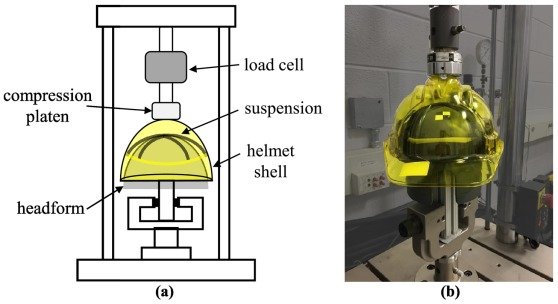
Unfortunately, many business owners find out about virtual cards the hard way. They either get scammed, have their card number compromised, or find themselves in the middle of a subscription debacle (the one for a subscription they thought they cancelled six months ago that’s charged them every month since then). It’s not that it’s too good to be true, it’s just that it’s too complicated to understand – at least, until you get started and can’t ever go back to the “old” way.
What Is a Virtual Card, Even?
A virtual business card is a card number without an actual card. You’ll get a 16-digit number (or however many a given company provides you with), an expiration date, and a CVV code. Everything you’d need to buy online or over the phone. But it’s sans card, and it’s a number you can make on your own at any time.
In fact, it’s similar to an unlimited number of transactions but with one transaction per number and purchase – imagine if you pay for all of your subscription services with one card but don’t have to worry about someone in your office putting their meal on the same transaction. You can generate a card for software subscriptions. One for a specific vendor. One for travel arrangements. All connected to your main business account, but independently operated.
And it takes about 30 seconds to do so. You log in, hit create, designate your limits as necessary, and BAM! You have a “virtual” card number. No PIN sent to your house in the mail. No activating calls. No wondering whether someone stole it from your mailbox.
Why Are Companies Using These Things, Though?
Because companies are actually using these things – here’s the catch. When you give an employee your card, they essentially have access to your account until you either take it back – or cancel it. An employee can max out your credit line based on their behavior for their physical cards – regardless of need – when you’re not there watching them spend. Yet when you give them a virtual card, you can set limits.
If a vendor needs $500 payment, for example, you create a virtual card with a limit of $500 specifically for that transaction and then no other vendor can charge anything else on it unless they’ve partnered with you on a single-use purchase – which never happens. This especially holds true for free trials that automatically renew or vendors who misinterpret “one-time purchase” to mean “as many times as I want!”
This is why many companies transition to a virtual business credit card because they can create different cards for different teams and projects. The marketing team gets theirs with an allocated budget limit, the sales team gets theirs, the operations team gets theirs. They each get what they need and no one blows through an entire line of credit accidentally (or otherwise).
The Safety That Really Does Count
The safety aspect is really where businesses get sold on them – but not for the reasons people think. Yes, if you don’t have a physical card to lose, someone can’t steal it; it doesn’t exist in physical form. However, if your number is compromised, you’re not worrying about all of the vendors that have that same card number; instead, you can cancel that one – since all your vendors have their own unique cards – and create another for things like subscriptions and recurring payments.
When a business does not realize how many different times they’ve used their business card until it gets compromised, they realize how many different vendors have that number – and now they need to create all new numbers again – and again – and again – but more of an inconvenient situation into which they’re upended.
With a virtual card, however, only that subscription service has the compromised number. You cancel it from them; your payments all stay intact because every vendor has its number registered to them only.
It also helps when someone has to report fraud; if you’ve used that same card number everywhere and see fraud from somewhere, good luck figuring out which vendor has the compromised system. But with every vendor having a unique number – and you spot something fraudulent on 4738 – now you know there’s an issue on that system’s end because that’s the only time you’ve ever used that number in your life.
How This Changes Employee Spending
The employee spending model hasn’t changed significantly; it’s still based on the premise of employee trust – and that’s often terrible. Employees either use their personal cards and wait for reimbursement (how unsustainable), or they get company credit cards and hope they only use them appropriately (and there goes all the finance team’s sleep at night).
Virtual cards are the middle ground. You can create a card for a cardholder and give it a limit for a set duration of time. Someone needs to travel for work? Create a $2,000 allotted spend limit card that expires in five days. They can do what’s needed for their travel; they cannot use it any longer once they return.
The limits also become finely tuned; some systems allow you to deny certain merchant categories strictly by using the card number. So you can get a Walmart credit card that only works at Home Depot and nothing else; or it can work at hotels but nowhere else under the sun; or digital advertising versus anything else mentioned above. They might have the number but they can’t use it at unauthorized vendors – the charge will decline.
The Subscription Problem This Actually Solves
What no business ever admits to is no one knows how many subscriptions they’re paying every month until someone questions it. Someone gets excited about an app or tool during one project; the project finishes and they forget about the subscription; six months later – even though no one’s used the app – you’re still paying $99/month for something that’s sitting in digital obscurity on someone’s desktop home screen.
With virtual cards, however, each subscription can have its own unique number; now when you’re accounting for charges, it’s obvious who owes what – each subscription has its own established account – and gone are the days of mysteries that take three people and 30 minutes to figure out with no outcome ever being truly worthwhile.
Even better? You can set expiration dates on cards themselves. Get an annual renewal? Great! Create this card with an expiration date of 13 months from now. When it comes time for renewal, the payment will decline – and someone will finally make a decision as to whether or not it’s worth paying for again. It’s not seamless; it’s an ugly way to go – but it works surprisingly well to keep subscription creep in check.
What This Means For Real Business Expenses
The reality is that they’ll work best with cards as physical cards aren’t obsolete – they still will be needed for face-to-face purchases (restaurants or gas stations or anything else where a charge needs to be physically inserted/swiped).
But real expenses are either over the phone or digitally created; recurring charges and payments are far more likely – and virtual cards make more sense as it’s faster to establish cards, easier to track management, and control spending with extensive options is easier than ever. The security features are genuinely security-driven and marketed to sound like they’re part of buzzword talk – but in reality – it’s stuff that’s actually useful – and goes beyond spending visibility that inevitably gets lost when so many virtual cards just become…cards you have to keep track of anyway.
But businesses who find themselves using virtual cards generally use them more than they thought they would; it’s one of those things that’s not transformational on paper – but over time – with how many small problems it solves – it makes sense after all is said and done!



